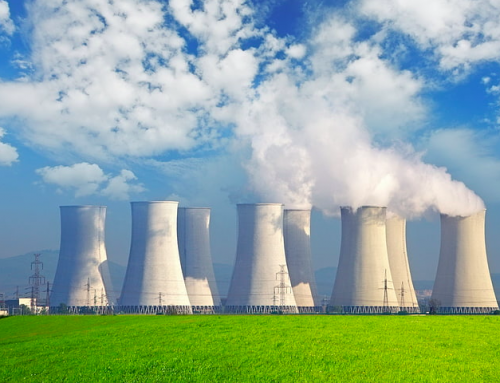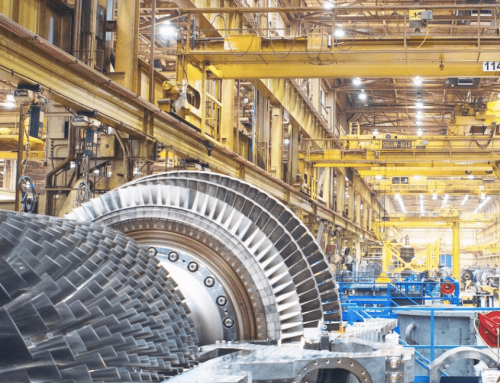The first commercial electrical power plant using a gas turbine as main driver was built in 1939. They have become increasingly popular due to their many advantages, such as their relatively high efficiency, fast start-up time, small footprint, low installation price and flexibility.
Here is why gas turbine plants are widely used in power plants:
Gas turbine power plants are relatively efficient. An open cycle GT plant can convert about 35-40% of the fuel they burn into electricity, which is better than a coal plant. In a combined cycle, where exhaust heat is recuperated, the system can be as high as 60% efficient.
Gas turbine plants cost relatively little to build. Capital costs (in $/kw) to install a GT simple cycle plant remain at one of the lowest in the industry and are further reduced when the GT is in a combined cycle. Further, due to its simplicity the operating costs are also very low, comparable to photovoltaic solar plants. Unlike PV plants, GT plants are very quick to install and commission.
Gas turbine power plants can generate electricity very quickly. They can start up in just a few minutes, which makes them ideal for peaking power plants that are used to meet peak demand for electricity and frequency swings. This is essential for today’s increasing capacity of PV and wind turbine technologies on electrical grids. The ability to cycle electrical supply very quickly to stabilize the grid is indispensable.
Gas turbine power plants are relatively small and compact. This makes them, again, easy to build and install, and it also makes them a good choice for remote locations.
Gas turbine combustion of natural gas is relatively clean. In most markets, the greenhouse gas emissions levels are closely monitored and GT technology allows mandated levels to be adhered to. For example, burning natural gas will produce 0.97 lbs/kwh while burning coal will produce more than twice as much at 2.26 lbs/kwh.
The performance of gas turbine power plants can vary depending on a number of factors, such as the type of gas turbine, the size of the plant, and the operating conditions. However, in general, gas turbine power plants can be very efficient and reliable.
The efficiency of a gas turbine power plant is typically measured as the percentage of the fuel that is converted into electricity. As mentioned earlier, gas turbine power plants, in a combined cycle configuration, can convert up to 60% of the fuel they burn into electricity.
GT systems are also very adaptable and various upgrades can improve operation. Such upgrades include: GT air inlet treatment (to cool air inlet to the GT), compressor intercoolers, flexible firing temperatures and more. This allows operators to operate the units in the most profitable way for various conditions.
The reliability of a gas turbine power plant is also very good. Gas turbine power plants can typically operate for many years without major repairs. This makes them a good choice for applications where a reliable source of electricity is needed.
Conclusion:
Gas turbine power plants are a versatile and efficient way to generate electricity. They are used in a wide variety of applications, from peaking power plants to combined cycle power plants. Gas turbine power plants are also becoming increasingly popular due to their environmental benefits. As the demand for cleaner energy sources grows, gas turbine power plants are likely to play an even more important role in the future of electricity generation.
If you are interested in learning more about gas turbine power plants, please contact us today. We would be happy to answer any questions you have.
Some frequent questions about gas turbine power plants:
How efficient are gas turbine power plants?
The efficiency of a gas turbine power plant can vary depending on a number of factors, such as the type of gas turbine, the size of the plant, and the operating conditions. However, in general, gas turbine power plants can be very efficient. Simple cycle gas turbine power plants can typically convert up to 35% of the fuel they burn into electricity. Combined cycle gas turbine power plants, which use the hot exhaust gas from the gas turbine to generate steam in a steam turbine, can achieve efficiencies of up to 60%.
What are the advantages of gas turbine power plants?
Gas turbine power plants have a number of advantages, including:
What are the disadvantages of gas turbine power plants?
Gas turbine power plants also have some disadvantages, including:
What are the different types of gas turbine power plants?
There are two main types of gas turbine power plants:
What are the applications of gas turbine power plants?
Gas turbine power plants are used in a variety of applications, including:




